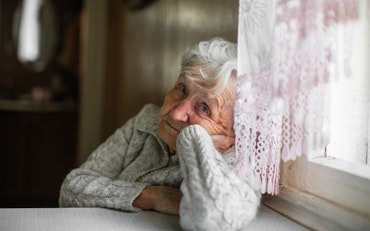Home-based aged care services: top 10 challenges and how to overcome them
SPONSORED — People grow old every day; it is an irreversible part of nature.
![<p>What are some of the challenges you’ve faced? [Source: FatCamera via iStock]</p>](https://agedcareguide-assets.imgix.net/news/articles/wp/FatCamera__1106.jpg?fm=pjpg&format=auto&w=550&q=65)
What are some of the challenges you’ve faced? [Source: FatCamera via iStock]
It is even more prominent now with the rise in some factors like declining fertility rates and increased life expectancy. This has resulted in an increase in the population of aged persons. For this reason, there is an increasing need for more home care services for the aged that strive to ensure the physical and emotional well-being of these seniors.
A 2024 report shows a 10 percent increase in the number of home care recipients in Australia as compared to the previous year. This leaves the number of home care recipients at over 273,000 persons. This population is expected to grow even higher in the coming years with an accompanying rise in demand for home care services for the aged.
This underscores the importance of home care services. Over the years, it has become the bedrock of aged care as many seniors prefer ageing at home than in retirement homes. However, aged home care has its challenges. We will address these challenges in a moment, but first, let’s gain a better understanding of what aged care services are all about.
Understanding aged care services
Aged care services refer to the entirety of physical and emotional support provided to elderly individuals to help them live better. These services include help with daily activities, healthcare and social engagement. Home-based aged care services, in particular, enable seniors to live independently while getting all the care and support they need in their homes.
These services help seniors to maintain their independence and autonomy. They are provided with everything they need to navigate their daily lives and they also have their family around them to assure them of their love and support. That is why it is a leading care choice for most seniors as opposed to senior retirement homes.
Challenges of aged home care services
Now, to the main order of business, let us look at some of the most common challenges experienced in the delivery of aged home care services.
1. Lack of skilled care workers
There is a considerable shortage of skilled care workers who are equipped to take care of seniors. Many factors influence this role deficit, like low pay, absence of government assistance, physically and emotionally stressful work, etc. This aged care worker shortage will grow stronger if action is not taken soon enough. For instance, Australia is likely to be in need of at least 110,000 direct aged-care workers in the next 10 years if not addressed in time.
This shortage of trained staff impacts on the quality and amount of care being provided to the elderly. The available workers complain of work overload leading to a high turnover rate. This situation complicates the aim of aged care services as the health and safety of these seniors can no longer be guaranteed under these circumstances.
Another key player in this shortage is the restrictive immigration policies which limit the recruitment of foreign care workers. With these problems at hand, there is a significant increase in unqualified home care workers who provide inadequate and harmful aged care services.
2. Caregiver burnout
Nursing and caregiving can be stressful duties to take on. The physical and emotional toll it takes on the providers can be lethal if not well managed. Both professional caregivers and family members feel this burnout. The workload, exhaustion, humiliation and even battering that are all part of the work have long been a demoralising factor for potential caregivers.
Such burnout not only affects the health of the caregivers but also undermines the standards of care being provided. An emotionally exhausted caregiver is likely to be susceptible to outbursts of temper, emotional collapse or disregard for the needs of those in their care. Such neglect could be detrimental to the care recipient since the older person’s needs are unpredictable and require immediate attention.
These high levels of stress can result in increased absenteeism and, consequently, a withdrawal that adds to the increasing turnover rate. These issues must be addressed to ensure the sustainability of at-home aged care services and the mitigation of risks arising from their oversight.
3. Managing multiple chronic conditions
Taking care of a senior is hardly a problem; it is taking care of a sick one. Care for an older diabetic or hypertensive patient at home is not an easy task. The caregiver has the responsibility of monitoring treatments, monitoring symptoms and regulating strict compliance with medication.
Taking care of a senior with one or more chronic illnesses increases the risk of medication mistakes and rehospitalisation. No matter how well-trained the caregiver may be, if they are not medical professionals, they have limited knowledge of the management of these illnesses. This could lead to medical complications that, if not promptly responded to, may be fatal.
For example, a caregiver who takes care of a senior who is diabetic will be promoted to administer insulin during crises, which is good. However, if the crisis continues and they keep giving insulin to the senior to calm the situation, it may eventually lead to hypoglycemia, which could be deadly. A medical professional would know when the insulin is sufficient and what other treatment routes to take to calm the situation.
4. Social isolation and loneliness
As much as most seniors prefer home care as opposed to retirement homes, they realise that it comes with disadvantages. Unlike retirement homes, where there are other seniors to interact and socialise with, home care confines you to your home with limited social access and this leads to loneliness. Studies show that prolonged loneliness also leads to cognitive decline, depression and even increased mortality.
While this may not be true for everyone, many seniors who live with their families can enjoy the company of their loved ones. However, in situations where the children are busy and the caregiver does not live there, loneliness is more likely to occur.
This is even more challenging for seniors with mobility issues. The home care worker primarily helps them to move around the house or yard and nothing more. Unless otherwise stated in the job agreement, they do not take responsibility for social tasks. Hence, the senior will more or less be limited to family and loved ones who come around once in a while.
5. Medication management
Medication errors remain a significant challenge in home-based aged care. Regardless of the awareness being created about the need for proper medication, many seniors still either miss their medication or take it the wrong way. This has been a major clinical problem in aged care provision, with aged adults visiting emergency departments more than 600,000 times each year due to adverse drug events
Factors leading to medication errors include cognitive decline, vision decline and having too many medications to adhere to. Missed doses or dosing errors may result in serious health complications or even fatalities if not addressed promptly. Caregivers try as much as they can to help seniors adhere to their medication properly, but it’s not always enough.
6. Safety and accessibility of the home environment
The safety of a senior should be the top priority of every caregiver. The home should be safe and friendly for the well-being of the senior. This includes reducing any risks to falls, collisions and other injuries. Falls are the leading cause of injury in older individuals and should be prevented or minimised in every possible way. Causes of falls in the home include:
- poor lighting;
- slippery floors;
- inappropriate footwear;
- lack of handrails or grab handles; and
- home design.
Additionally, cluttered spaces contribute significantly to these injuries. If the proper home modifications are not in place, older adults with mobility or visual impairments can barely move around the home without the possibility of sustaining serious injuries.
There is also a need to install security measures for the safety of the elderly. It is not uncommon to hear that seniors’ homes are burgled and valuable items are carted away. To address this, door locks should be in good condition and a security dog could be helpful if possible. Seniors should also have phones within their reach so they can alert local authorities in case of a break-in.
7. Emotional and psychological well-being
The emotional and psychological welfare of seniors is an essential part of aged care services. The loss of loved ones, cognitive conditions and reduced social contact can lead to the deterioration of the mental health of a senior and, subsequently, mental diseases like dementia, depression and anxiety may set in. It is a serious issue in home-based care for the older population because mental welfare is an essential part of the entire health and well-being of seniors.
Mental illnesses can affect the quality of life and make it difficult to manage physical conditions. If the senior feels hopeless, loses motivation or keeps to themselves, there is a reduced effect of medication. In this case, there is an increased workload on the caregiver and/or the family. There will be more hospital visits and possibly more challenging health care needs.
8. Time management and commitment
A care recipient is entitled to receive the care they deserve within the agreed-upon hours. This means that for the given hours, the senior depends on the caregiver to provide for their needs. If the caregiver is constantly turning up late or having irregular care patterns, it disrupts the senior’s daily life plan and poses a cognitive issue.
Factors that could lead to irregular care patterns include stress, fatigue and reduced personal time. If the caregiver experiences any of such challenges, it would be difficult to manage daily tasks, medical appointments and emergencies properly. Sometimes, it could also be a result of negligence by unprofessional caregivers. In that case, laying off the care worker would be the best approach.
9. Cultural and language barriers
Language and cultural barriers are part of the challenges of home-based aged care. Caregivers from a different culture may not be able to understand the needs of individuals under their care. This creates a gap between the proper expression of the needs of the older individual and the delivery of individualised care by the caregiver.
Cultural misunderstandings may arise when caregivers lack knowledge of sensitive cultural beliefs and practices. For example, a caregiver, in trying to applaud the effort of their care recipient, may give them a thumbs up. They are okay everywhere else, but some Australian cultures find it offensive. Without the proper communication and cultural alignment, the senior will likely be dissatisfied and the caregiver frustrated.
10. Financial challenges
Financial constraints are one of the less talked about problems associated with aged care services at home. However, it is one of the most challenging factors that undermines the provision of aged care services. With many seniors relying on fixed incomes, it may be difficult to pay workers. With the associated workload, caregivers hardly go low with their prices, hence making it impossible for many seniors to hire caregivers.
Agencies like the NDIA help in providing funding for home care support services, but it is not always so easy to access or even enough. Without a permanent disability, seniors can not access the NDIS funding, leaving them to cater for their needs themselves.
Overcoming the challenges of home care for seniors
Addressing the different challenges of home-based care requires a collective effort of seniors, caregivers, family members, the community and the government as well.
- Workforce development
More home care support workers should be recruited and retention should be promoted as well. Competitive wages and incentives, like career advancement opportunities, will help bring in more workers and curtail the shortage of skilled care workers.
- Caregiver support
There should be alternative home care support systems to help caregivers in their jobs. Support systems, such as respite care, can be very effective in alleviating the stress of caregivers and reducing burnout. Counselling and training workshops should also be implemented to help caregivers be better equipped in performing their tasks.
- Integrated care models
The introduction of allied healthcare is very important in aged care services. Healthcare professionals should be readily available to assist caregivers in ensuring the proper management of the care recipient’s condition.
- Social engagement initiatives
Seniors in home-based care can participate more in social activities through community programs and support groups. Meeting and interacting with other people helps them to unwind and have a better attitude towards the care they receive.
- Medication management tools
Proper use of medication through the use of digital tools should be adopted in enhancing the safety and comfort of seniors under home care. The application of technological equipment in care for aged adults at home reduces medical errors. Digital reminders and medication alerts, digital activity monitors and home automation devices are very helpful in medication adherence.
- Home safety assessments
It is important to conduct regular home evaluations and implement necessary modifications. To ensure the safety of seniors at home, handrails and bars should be installed where necessary and the floor should always be dry and uncluttered. Bathroom and kitchen modifications should also be done where necessary.
- Mental health services
As a part of the allied health services, mental health professionals should be integrated into home care services. They provide access to counselling and therapy as needed to ensure the well-being of the seniors.
- Time management resources
Caregivers should be trained on how to manage their personal life and their caregiving responsibilities effectively. Flexible arrangements should be made to accommodate the needs of both the caregiver and the care recipient.
- Cultural competency training
Training should be provided on cultural sensitivity and language skills to improve communication and respect for seniors from diverse cultural backgrounds.
- Financial planning assistance
The government should create more agencies and provide more funding to take care of aged care services. Eligibility and accessibility should also be made as easy as possible.
Conclusion
Home care services are important in the care of the ageing population. It allows seniors to remain independent while still living the best moments in life in their own homes. It has its challenges, however, that affect its effectiveness in providing for the needs of the care recipients.
However, by implementing some of the solutions and strategies pointed out above, the problems can be managed. It will take coordination between policymakers, healthcare practitioners, caregivers and communities for this to happen. At the end of the day, the goal remains to ensure that seniors receive the holistic care that they need so they can live comfortably and in dignity.










